Xinya Du
Event Extraction in Large Language Model
Dec 22, 2025Abstract:Large language models (LLMs) and multimodal LLMs are changing event extraction (EE): prompting and generation can often produce structured outputs in zero shot or few shot settings. Yet LLM based pipelines face deployment gaps, including hallucinations under weak constraints, fragile temporal and causal linking over long contexts and across documents, and limited long horizon knowledge management within a bounded context window. We argue that EE should be viewed as a system component that provides a cognitive scaffold for LLM centered solutions. Event schemas and slot constraints create interfaces for grounding and verification; event centric structures act as controlled intermediate representations for stepwise reasoning; event links support relation aware retrieval with graph based RAG; and event stores offer updatable episodic and agent memory beyond the context window. This survey covers EE in text and multimodal settings, organizing tasks and taxonomy, tracing method evolution from rule based and neural models to instruction driven and generative frameworks, and summarizing formulations, decoding strategies, architectures, representations, datasets, and evaluation. We also review cross lingual, low resource, and domain specific settings, and highlight open challenges and future directions for reliable event centric systems. Finally, we outline open challenges and future directions that are central to the LLM era, aiming to evolve EE from static extraction into a structurally reliable, agent ready perception and memory layer for open world systems.
HiPRAG: Hierarchical Process Rewards for Efficient Agentic Retrieval Augmented Generation
Oct 09, 2025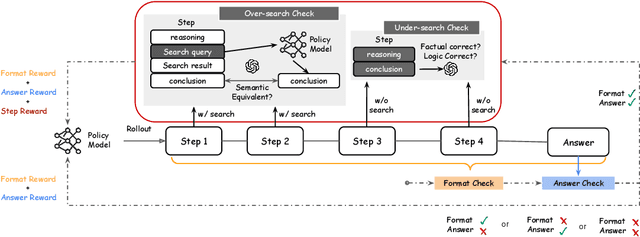
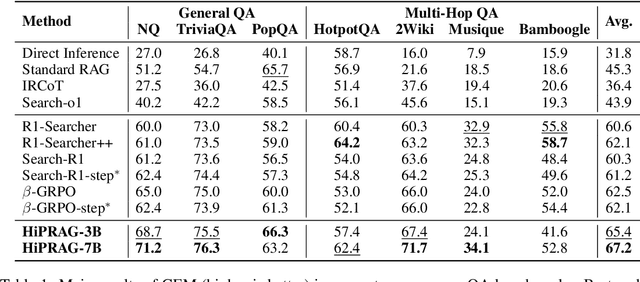
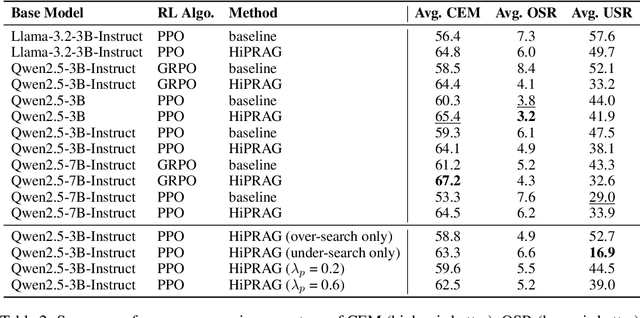
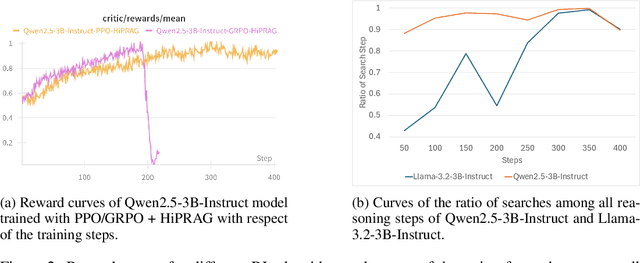
Abstract:Agentic RAG is a powerful technique for incorporating external information that LLMs lack, enabling better problem solving and question answering. However, suboptimal search behaviors exist widely, such as over-search (retrieving information already known) and under-search (failing to search when necessary), which leads to unnecessary overhead and unreliable outputs. Current training methods, which typically rely on outcome-based rewards in a RL framework, lack the fine-grained control needed to address these inefficiencies. To overcome this, we introduce Hierarchical Process Rewards for Efficient agentic RAG (HiPRAG), a training methodology that incorporates a fine-grained, knowledge-grounded process reward into the RL training. Our approach evaluates the necessity of each search decision on-the-fly by decomposing the agent's reasoning trajectory into discrete, parsable steps. We then apply a hierarchical reward function that provides an additional bonus based on the proportion of optimal search and non-search steps, on top of commonly used outcome and format rewards. Experiments on the Qwen2.5 and Llama-3.2 models across seven diverse QA benchmarks show that our method achieves average accuracies of 65.4% (3B) and 67.2% (7B). This is accomplished while improving search efficiency, reducing the over-search rate to just 2.3% and concurrently lowering the under-search rate. These results demonstrate the efficacy of optimizing the reasoning process itself, not just the final outcome. Further experiments and analysis demonstrate that HiPRAG shows good generalizability across a wide range of RL algorithms, model families, sizes, and types. This work demonstrates the importance and potential of fine-grained control through RL, for improving the efficiency and optimality of reasoning for search agents.
CLUE: Non-parametric Verification from Experience via Hidden-State Clustering
Oct 02, 2025
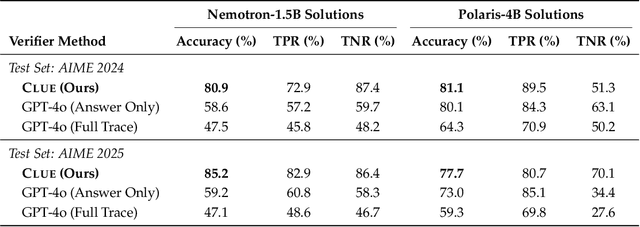
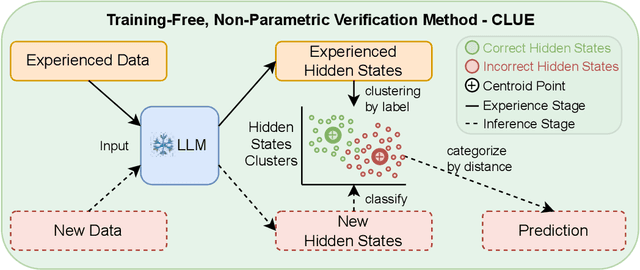
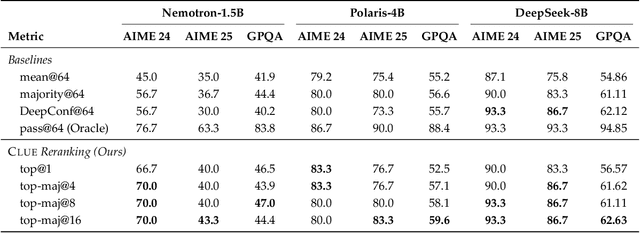
Abstract:Assessing the quality of Large Language Model (LLM) outputs presents a critical challenge. Previous methods either rely on text-level information (e.g., reward models, majority voting), which can overfit to superficial cues, or on calibrated confidence from token probabilities, which would fail on less-calibrated models. Yet both of these signals are, in fact, partial projections of a richer source of information: the model's internal hidden states. Early layers, closer to token embeddings, preserve semantic and lexical features that underpin text-based judgments, while later layers increasingly align with output logits, embedding confidence-related information. This paper explores hidden states directly as a unified foundation for verification. We show that the correctness of a solution is encoded as a geometrically separable signature within the trajectory of hidden activations. To validate this, we present Clue (Clustering and Experience-based Verification), a deliberately minimalist, non-parametric verifier. With no trainable parameters, CLUE only summarizes each reasoning trace by an hidden state delta and classifies correctness via nearest-centroid distance to ``success'' and ``failure'' clusters formed from past experience. The simplicity of this method highlights the strength of the underlying signal. Empirically, CLUE consistently outperforms LLM-as-a-judge baselines and matches or exceeds modern confidence-based methods in reranking candidates, improving both top-1 and majority-vote accuracy across AIME 24/25 and GPQA. As a highlight, on AIME 24 with a 1.5B model, CLUE boosts accuracy from 56.7% (majority@64) to 70.0% (top-maj@16).
SciEvent: Benchmarking Multi-domain Scientific Event Extraction
Sep 19, 2025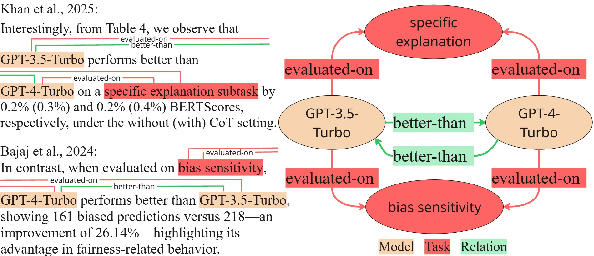

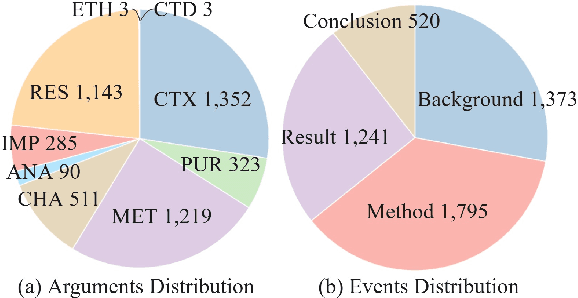
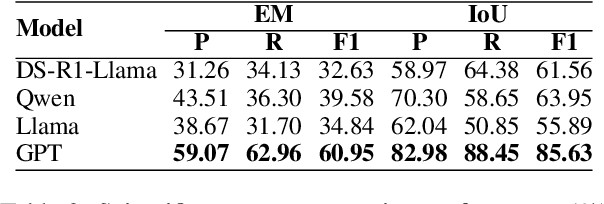
Abstract:Scientific information extraction (SciIE) has primarily relied on entity-relation extraction in narrow domains, limiting its applicability to interdisciplinary research and struggling to capture the necessary context of scientific information, often resulting in fragmented or conflicting statements. In this paper, we introduce SciEvent, a novel multi-domain benchmark of scientific abstracts annotated via a unified event extraction (EE) schema designed to enable structured and context-aware understanding of scientific content. It includes 500 abstracts across five research domains, with manual annotations of event segments, triggers, and fine-grained arguments. We define SciIE as a multi-stage EE pipeline: (1) segmenting abstracts into core scientific activities--Background, Method, Result, and Conclusion; and (2) extracting the corresponding triggers and arguments. Experiments with fine-tuned EE models, large language models (LLMs), and human annotators reveal a performance gap, with current models struggling in domains such as sociology and humanities. SciEvent serves as a challenging benchmark and a step toward generalizable, multi-domain SciIE.
FIFA: Unified Faithfulness Evaluation Framework for Text-to-Video and Video-to-Text Generation
Jul 09, 2025



Abstract:Video Multimodal Large Language Models (VideoMLLMs) have achieved remarkable progress in both Video-to-Text and Text-to-Video tasks. However, they often suffer fro hallucinations, generating content that contradicts the visual input. Existing evaluation methods are limited to one task (e.g., V2T) and also fail to assess hallucinations in open-ended, free-form responses. To address this gap, we propose FIFA, a unified FaIthFulness evAluation framework that extracts comprehensive descriptive facts, models their semantic dependencies via a Spatio-Temporal Semantic Dependency Graph, and verifies them using VideoQA models. We further introduce Post-Correction, a tool-based correction framework that revises hallucinated content. Extensive experiments demonstrate that FIFA aligns more closely with human judgment than existing evaluation methods, and that Post-Correction effectively improves factual consistency in both text and video generation.
Search Wisely: Mitigating Sub-optimal Agentic Searches By Reducing Uncertainty
May 22, 2025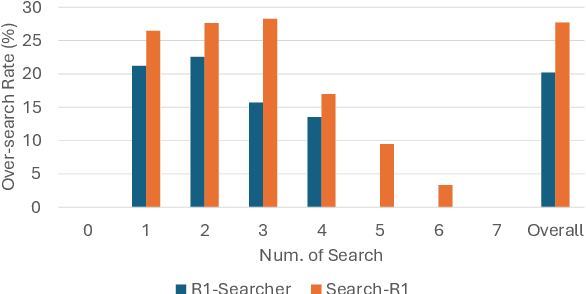
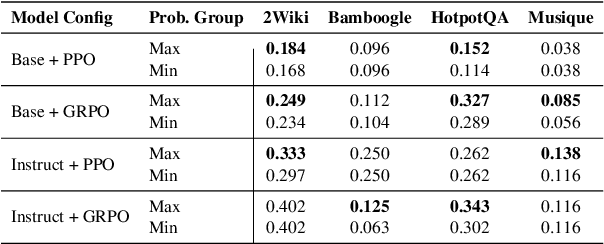
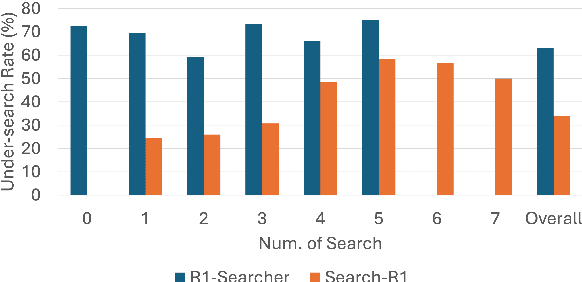
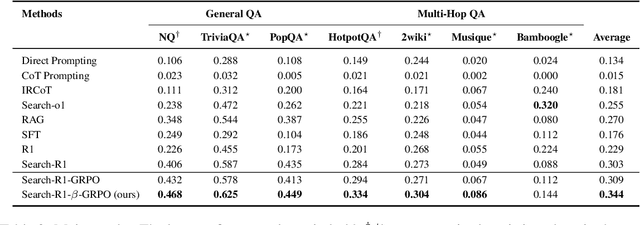
Abstract:Agentic Retrieval-Augmented Generation (RAG) systems enhance Large Language Models (LLMs) by enabling dynamic, multi-step reasoning and information retrieval. However, these systems often exhibit sub-optimal search behaviors like over-search (retrieving redundant information) and under-search (failing to retrieve necessary information), which hinder efficiency and reliability. This work formally defines and quantifies these behaviors, revealing their prevalence across multiple QA datasets and agentic RAG systems (e.g., one model could have avoided searching in 27.7% of its search steps). Furthermore, we demonstrate a crucial link between these inefficiencies and the models' uncertainty regarding their own knowledge boundaries, where response accuracy correlates with model's uncertainty in its search decisions. To address this, we propose $\beta$-GRPO, a reinforcement learning-based training method that incorporates confidence threshold to reward high-certainty search decisions. Experiments on seven QA benchmarks show that $\beta$-GRPO enable a 3B model with better agentic RAG ability, outperforming other strong baselines with a 4% higher average exact match score.
A Comprehensive Analysis for Visual Object Hallucination in Large Vision-Language Models
May 04, 2025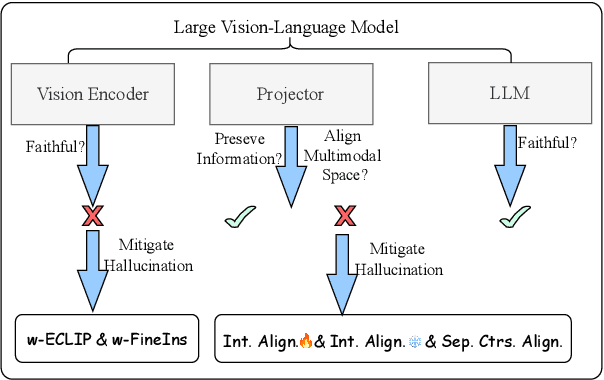


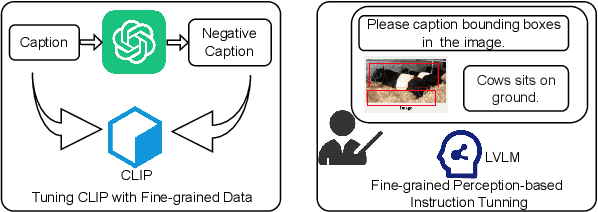
Abstract:Large Vision-Language Models (LVLMs) demonstrate remarkable capabilities in multimodal tasks, but visual object hallucination remains a persistent issue. It refers to scenarios where models generate inaccurate visual object-related information based on the query input, potentially leading to misinformation and concerns about safety and reliability. Previous works focus on the evaluation and mitigation of visual hallucinations, but the underlying causes have not been comprehensively investigated. In this paper, we analyze each component of LLaVA-like LVLMs -- the large language model, the vision backbone, and the projector -- to identify potential sources of error and their impact. Based on our observations, we propose methods to mitigate hallucination for each problematic component. Additionally, we developed two hallucination benchmarks: QA-VisualGenome, which emphasizes attribute and relation hallucinations, and QA-FB15k, which focuses on cognition-based hallucinations.
VistaDPO: Video Hierarchical Spatial-Temporal Direct Preference Optimization for Large Video Models
Apr 17, 2025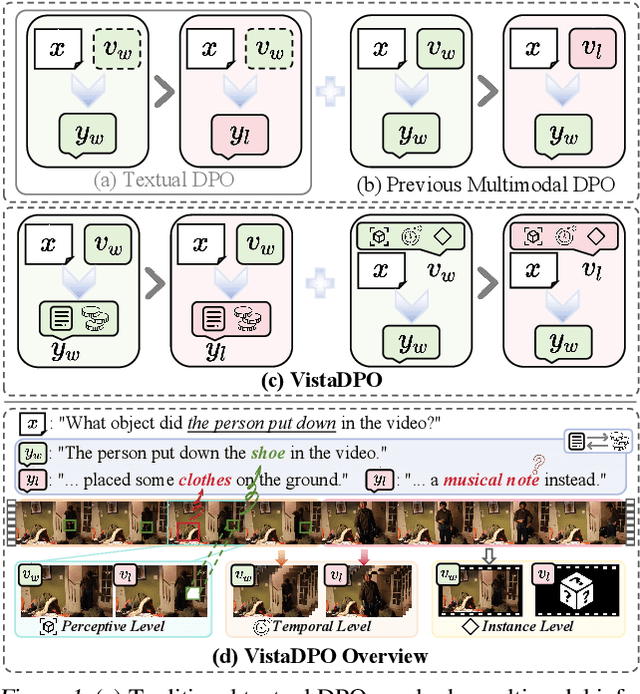
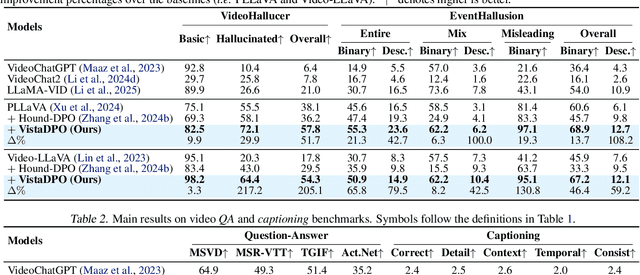

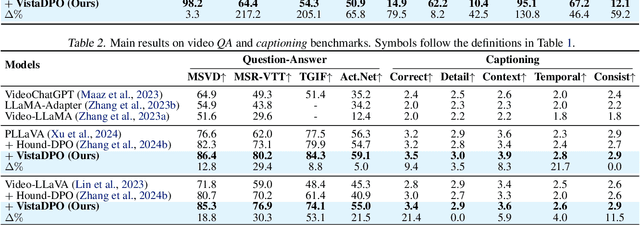
Abstract:Large Video Models (LVMs) built upon Large Language Models (LLMs) have shown promise in video understanding but often suffer from misalignment with human intuition and video hallucination issues. To address these challenges, we introduce VistaDPO, a novel framework for Video Hierarchical Spatial-Temporal Direct Preference Optimization. VistaDPO enhances text-video preference alignment across three hierarchical levels: i) Instance Level, aligning overall video content with responses; ii) Temporal Level, aligning video temporal semantics with event descriptions; and iii) Perceptive Level, aligning spatial objects with language tokens. Given the lack of datasets for fine-grained video-language preference alignment, we construct VistaDPO-7k, a dataset of 7.2K QA pairs annotated with chosen and rejected responses, along with spatial-temporal grounding information such as timestamps, keyframes, and bounding boxes. Extensive experiments on benchmarks such as Video Hallucination, Video QA, and Captioning performance tasks demonstrate that VistaDPO significantly improves the performance of existing LVMs, effectively mitigating video-language misalignment and hallucination. The code and data are available at https://github.com/HaroldChen19/VistaDPO.
SFT or RL? An Early Investigation into Training R1-Like Reasoning Large Vision-Language Models
Apr 10, 2025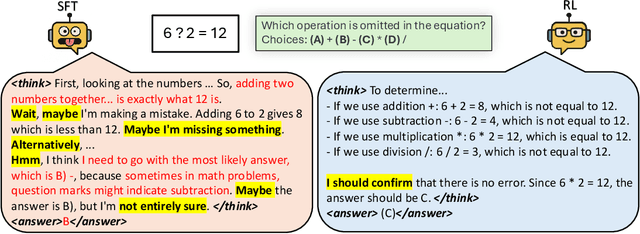
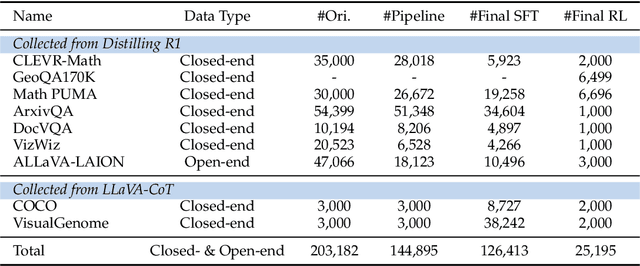
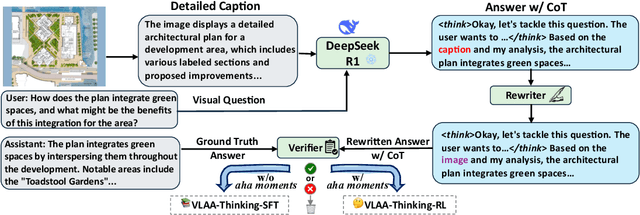
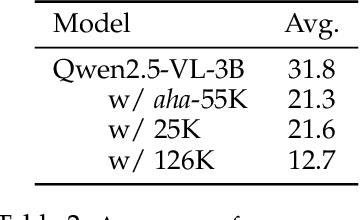
Abstract:This work revisits the dominant supervised fine-tuning (SFT) then reinforcement learning (RL) paradigm for training Large Vision-Language Models (LVLMs), and reveals a key finding: SFT can significantly undermine subsequent RL by inducing ``pseudo reasoning paths'' imitated from expert models. While these paths may resemble the native reasoning paths of RL models, they often involve prolonged, hesitant, less informative steps, and incorrect reasoning. To systematically study this effect, we introduce VLAA-Thinking, a new multimodal dataset designed to support reasoning in LVLMs. Constructed via a six-step pipeline involving captioning, reasoning distillation, answer rewrite and verification, VLAA-Thinking comprises high-quality, step-by-step visual reasoning traces for SFT, along with a more challenging RL split from the same data source. Using this dataset, we conduct extensive experiments comparing SFT, RL and their combinations. Results show that while SFT helps models learn reasoning formats, it often locks aligned models into imitative, rigid reasoning modes that impede further learning. In contrast, building on the Group Relative Policy Optimization (GRPO) with a novel mixed reward module integrating both perception and cognition signals, our RL approach fosters more genuine, adaptive reasoning behavior. Notably, our model VLAA-Thinker, based on Qwen2.5VL 3B, achieves top-1 performance on Open LMM Reasoning Leaderboard (https://huggingface.co/spaces/opencompass/Open_LMM_Reasoning_Leaderboard) among 4B scale LVLMs, surpassing the previous state-of-the-art by 1.8%. We hope our findings provide valuable insights in developing reasoning-capable LVLMs and can inform future research in this area.
Do Retrieval-Augmented Language Models Adapt to Varying User Needs?
Feb 27, 2025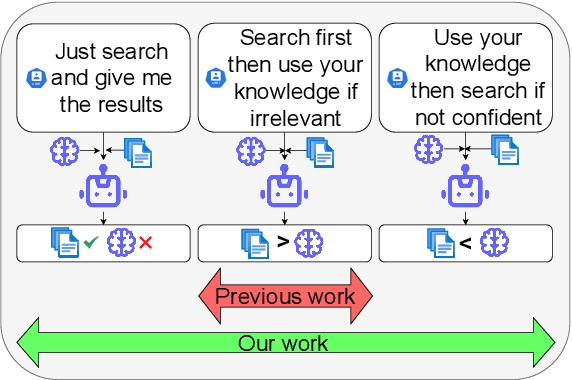

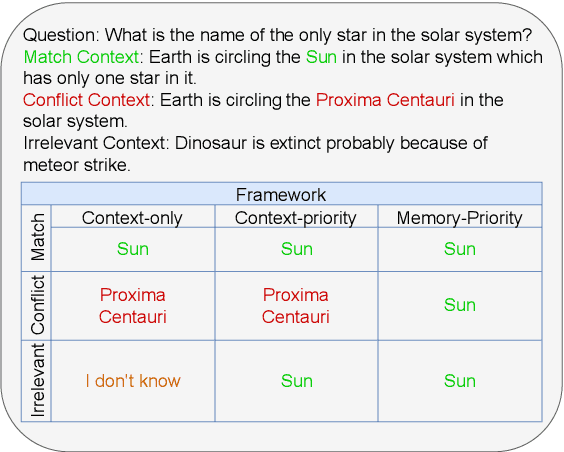
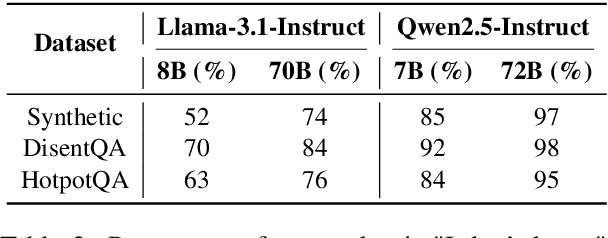
Abstract:Recent advancements in Retrieval-Augmented Language Models (RALMs) have demonstrated their efficacy in knowledge-intensive tasks. However, existing evaluation benchmarks often assume a single optimal approach to leveraging retrieved information, failing to account for varying user needs. This paper introduces a novel evaluation framework that systematically assesses RALMs under three user need cases-Context-Exclusive, Context-First, and Memory-First-across three distinct context settings: Context Matching, Knowledge Conflict, and Information Irrelevant. By varying both user instructions and the nature of retrieved information, our approach captures the complexities of real-world applications where models must adapt to diverse user requirements. Through extensive experiments on multiple QA datasets, including HotpotQA, DisentQA, and our newly constructed synthetic URAQ dataset, we find that restricting memory usage improves robustness in adversarial retrieval conditions but decreases peak performance with ideal retrieval results and model family dominates behavioral differences. Our findings highlight the necessity of user-centric evaluations in the development of retrieval-augmented systems and provide insights into optimizing model performance across varied retrieval contexts. We will release our code and URAQ dataset upon acceptance of the paper.
 Add to Chrome
Add to Chrome Add to Firefox
Add to Firefox Add to Edge
Add to Edge